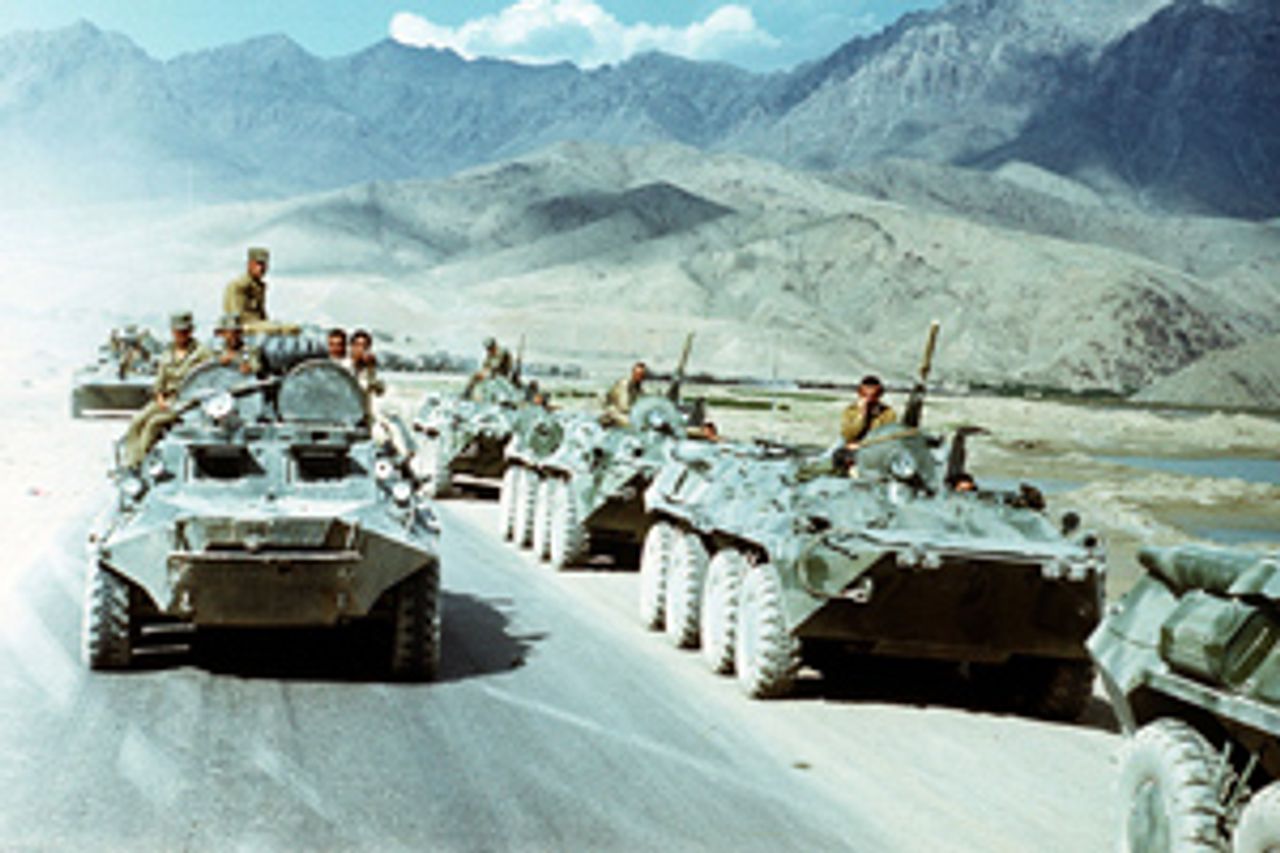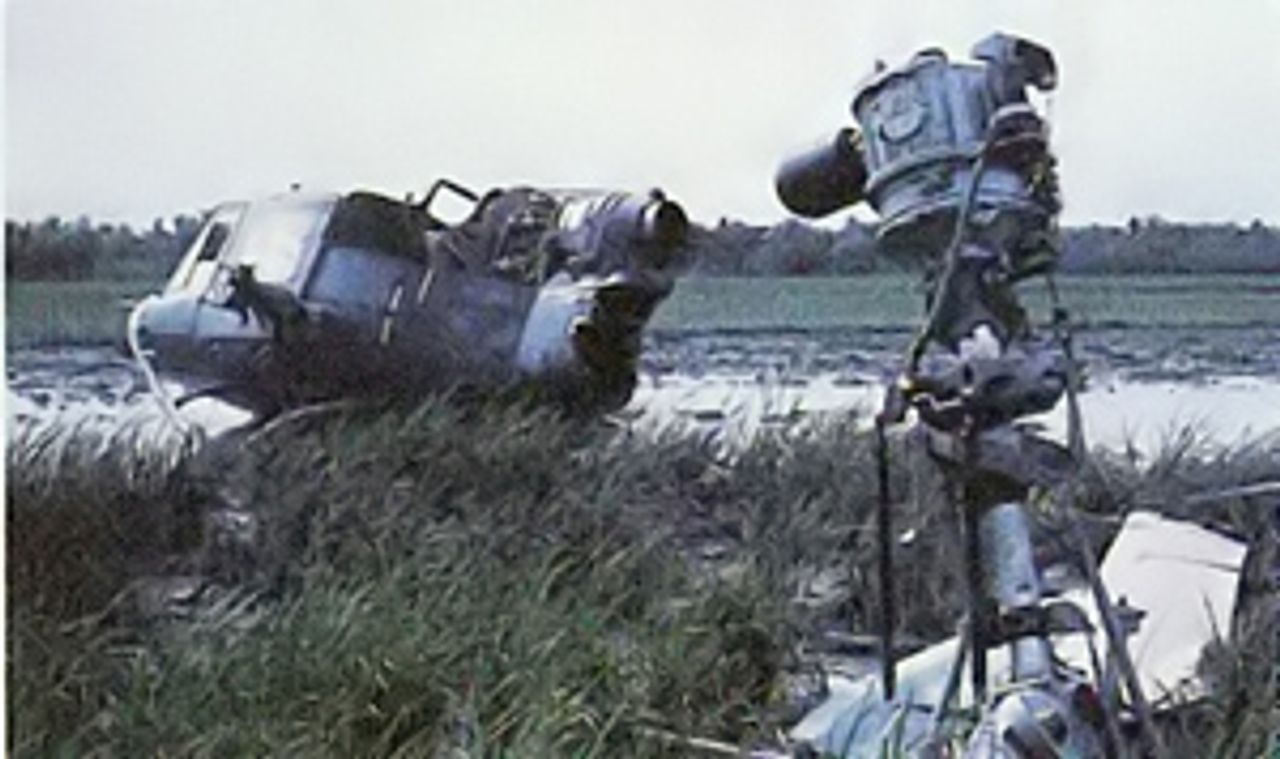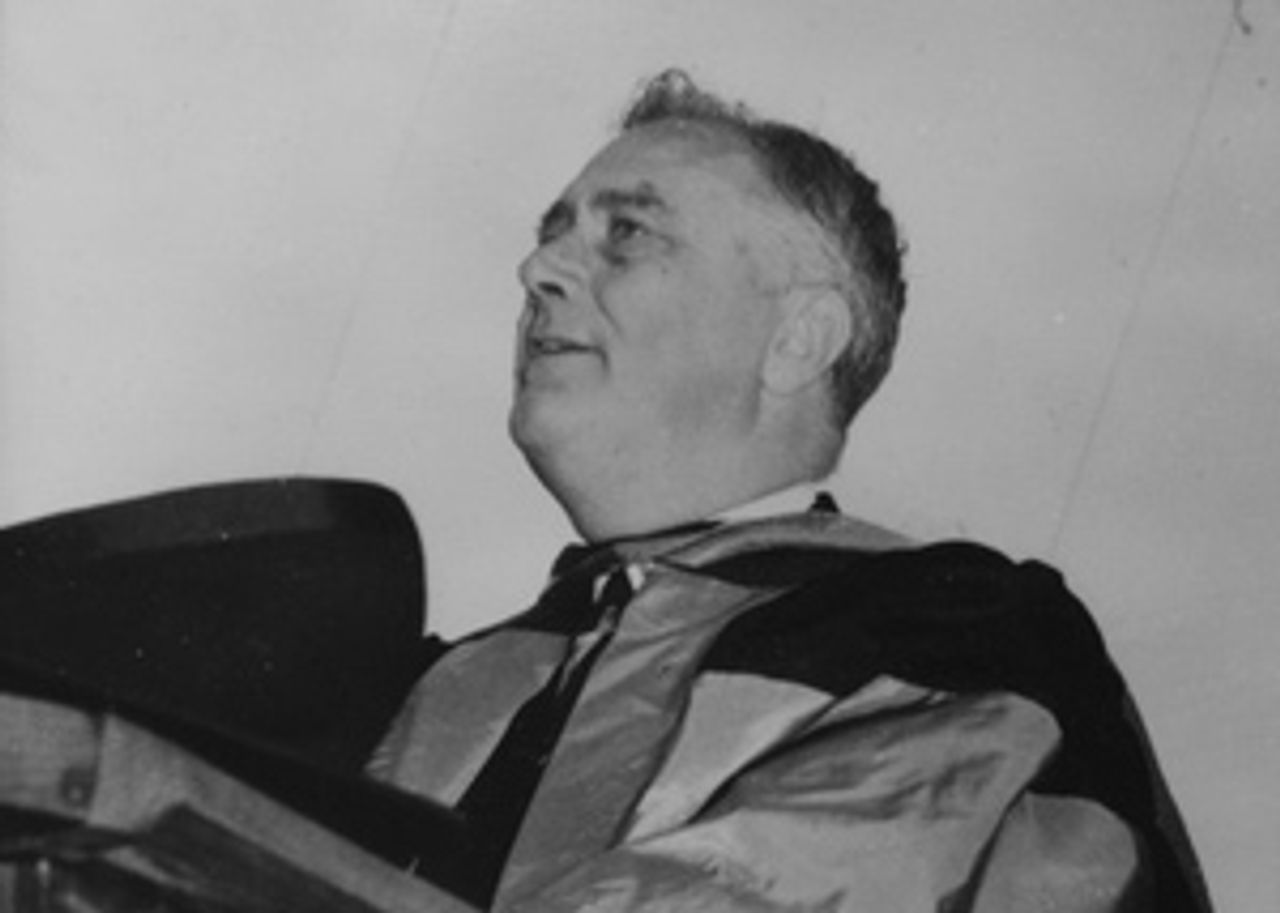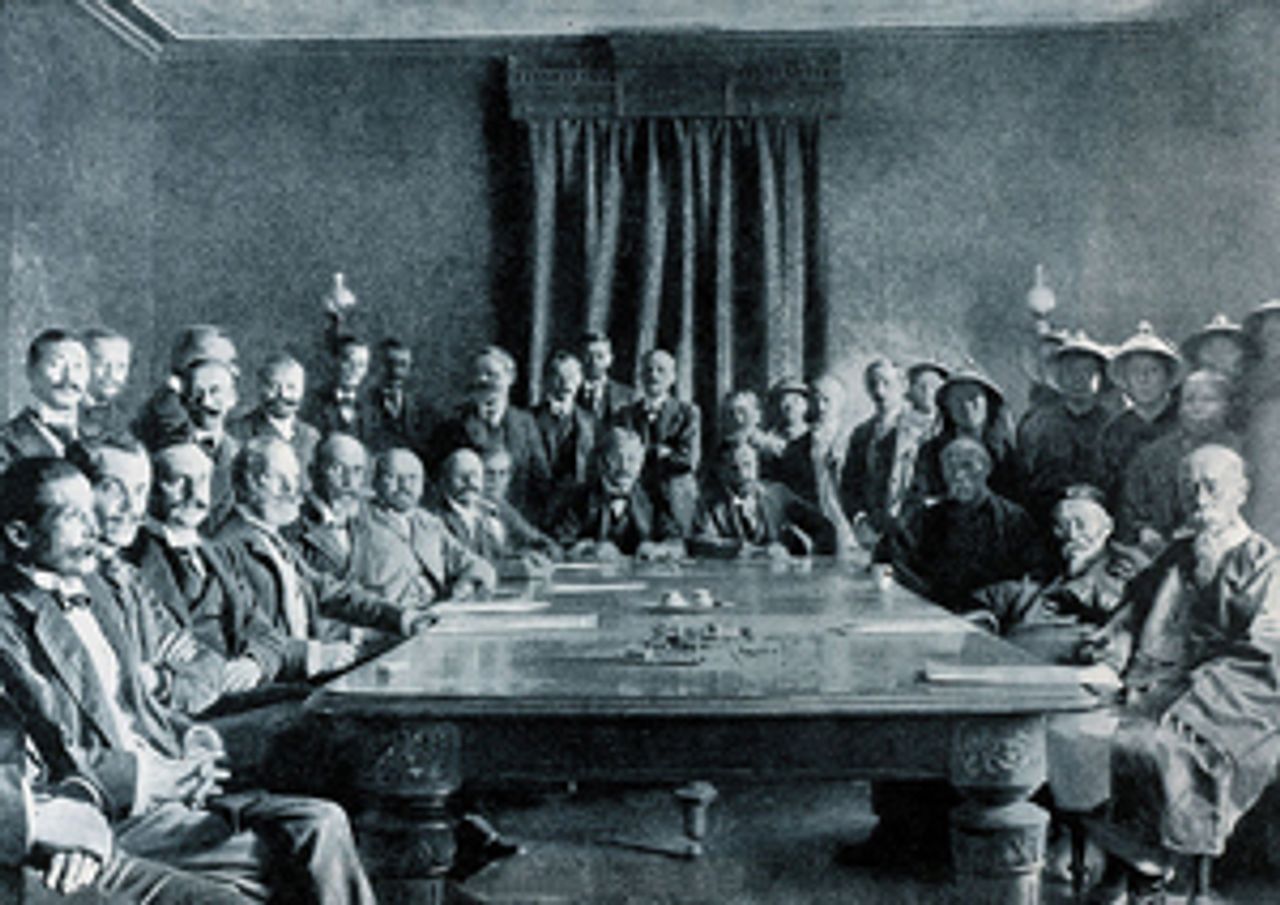This Week in History provides brief synopses of important historical events whose anniversaries fall this week.
25 Years Ago | 50 Years Ago | 75 Years Ago | 100 Years Ago
25 years ago: Soviet regime proposes Afghan pullout
 Soviet troops pulling out of Afghanistan, 1988
Soviet troops pulling out of Afghanistan, 1988Soviet Foreign Minister Eduard Shevardnadze arrived in Kabul on January 4, 1988 to meet with Afghan President Mohammad Najibullah. The official press agency Tass blacked out news of the content of the discussions for the first 48 hours. Shevardnadze later confirmed speculation that the country was seeking a way out of Afghanistan when he announced the intention of the USSR to pull out all remaining Soviet troops by the end of 1988, ending the eight-year intervention. There were strong indications that Najibullah, at least initially, opposed the pullout.
A year earlier, Najibullah, who headed the People’s Democratic Party of Afghanistan (PDPA), announced a unilateral cease-fire by the Soviet-backed Afghan government, signaling the withdrawal phase of Soviet foreign policy. The US-financeed Islamic mujahideen rejected the cease-fire and continued its war against the regime. Najibullah was hated by the populace for his brutal methods of torture and executions as head of the Afghan secret police. The conflict had driven more than three million Afghanis from their homes into Pakistani refugee camps by 1987.
After the meetings with Najibullah in January 1988, Shevardnadze announced that the withdrawal would no longer be dependent on agreement over the makeup of a future regime in Afghanistan. The Moscow Stalinist bureaucracy had previously made clear that it wanted the formation of a “broad-based” coalition government dominated by bourgeois politicians in which Najibullah’s PDPA would hold a minority position.
With the subsequent lack of Soviet support, Najibullah was ousted in 1992. The Taliban, with the backing of the US, eventually took power in 1996, hanging Najibullah from a lamppost. American policy in Afghanistan, in arming and financing the Islamist opposition to the Soviet intervention, was responsible for the rise of both the Taliban and Al Qaeda, with disastrous results.
50 years ago: Battle of Ap Bac in Vietnam War
 Chopper wreck at Ap Bac
Chopper wreck at Ap BacOn January 2 and 3, 1963, the National Liberation Front, or Viet Cong, as the American media termed it, won its first significant battle over US and South Vietnamese forces.
American military intelligence had detected a large NLF force in the village of Ap Tan Thoi in Dinh Tuong Province in the Mekong Delta. Several companies of South Vietnamese government troops sent into dislodge the NLF were instead pinned down. The US military sent 15 helicopters with reinforcements, but five of the aircraft were downed by NLF gunfire.
Armored Personnel Carriers were sent in by the “American advisors,” in an effort to rescue the infantry forces and helicopter crews. According to one account, when the APCs approached the area, “the Viet Cong forces poured heavy fire onto the vehicles, focusing on the machine gunner on top of each carrier.” Under heavy fire, the helicopter crews and South Vietnamese forces were rescued by the armored vehicles. The APCs then attacked the NLF forces, but the latter charged them and threw hand grenades, and the vehicles withdrew.
The NLF fighters pulled back on the night of January 3, having inflicted nearly 200 casualties on government forces. Three US soldiers were killed and eight more were wounded. The NLF suffered 58 casualties.
75 years ago: President Franklin Roosevelt delivers his fifth State of the Union
 Roosevelt in 1938
Roosevelt in 1938In the days leading up to President Franklin Roosevelt’s fifth State of the Union address, which he delivered on January 3, 1938, the press spoke of his plans to criticize big business. The president, according to the Times [of London], was going to utilize the speech to assail the commercial and industrialist monopolists. Secretary of the Interior Harold Ickes told the press prior to the president’s speech that “Big business must learn to get along with public opinion as business has learned in England.”
In his address, after addressing national security concerns, the Democratic president turned his attention to the national economy and declared that the “misuse of the powers of capital or selfish suspension of the employment of capital must be ended.” “The overwhelming majority of business men and bankers intend to be good citizens,” said Roosevelt. “Only a small minority have displayed poor citizenship by engaging in practices which are dishonest or definitely harmful to society.”
The president asserted there was a deliberate attempt by a “condemned minority” to distort the government’s criticism of their practices as an “attack on all business.” Listing corporate tax avoidance; excessive capitalization, investment write-ups and security manipulations; price rigging and collusive bidding; deliberate overproduction and, finally, the shifting of production “in pursuit of the cheapest wage scale,” Roosevelt suggested these practices should end, but failed to indicate how his administration would do so.
Roosevelt warned that the nation was under no obligation “to make America safe either for incompetent business men or for business men who fail to note the trend of the times and continue the use of machinery of economics and practices of finance as outworn as the cotton spindle of 1870.” Indeed the practices must be stopped or the “capitalistic system will destroy itself through its abuses.”
100 years ago: Major powers sign loan agreement with China
 The signing of the Boxer Protocol in 1901
The signing of the Boxer Protocol in 1901On January 1, 1913, the “six powers”—Britain, the United States, Germany, France, Russia and Japan—reached a preliminary agreement with China, to establish a loan of 25 million pounds. On December 31, 1912, China had defaulted on payments under the Boxer Indemnity Agreement, established in the aftermath of the Boxer Rebellion to compensate the major powers for losses sustained during the popular upheaval of 1900.
At the end of 1912, Russia and France, with the tacit support of the other major powers, vocally opposed the Chinese regime’s appeals for an extension of time to pay installments under the Boxer indemnity.
The Times [of London] articulated the concerns of the major powers that underlay the decision to grant a loan. The paper quoted a Peking correspondent who described the Chinese government as “dangerously invertebrate,” and noted that much of the south of the country was in a “lawless state.”
The terms of the loan, dubbed the “Reorganisation Loan,” were finalised in April 1913. They included direct foreign oversight of revenue collection in the Chinese salt industry. US President Woodrow Wilson withdrew from the loan agreement, as it was not viewed as sufficiently advantageous to American corporations.
The loan was part of the attempt by the major powers to maintain their grip over China, and prevent the development of further social upheavals in the aftermath of the Chinese Revolution of 1911.
In October 1911, a military revolt in Wuchang ignited a nationwide upheaval against the Manchu dynasty, which was viewed as the corrupt instrument of the great powers and a tiny imperial class. While the revolution toppled the dynasty within months, it was led by nationalist layers of the intelligentsia who mobilized disgruntled sections of the state bureaucracy and the military, but made no appeal to the peasantry or the urban masses. The incomplete character of the revolution was expressed in the ascension to power of Yuan Shikai, a warlord with close ties to the Manchus, in March 1912.
